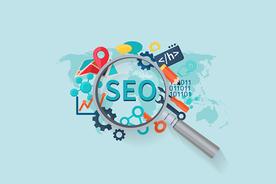
In the dynamic landscape of digital marketing, understanding your target audience is crucial. One critical aspect of this understanding is recognizing buyer intent keywords and leveraging them to improve your marketing strategies. In essence, buyer intent keywords are specific phrases or words that potential customers use when searching for a product or service they intend to buy. These keywords reveal the stage at which a customer is in their buying journey, providing invaluable insights for businesses looking to connect with ready-to-convert leads.
The Benefits of Buyer Intent Keywords
1、Higher Conversion Rates: By focusing on buyer intent keywords, you're targeting individuals who have already demonstrated their interest in making a purchase. This means that these prospects are further along in the sales funnel compared to those targeting more generic or informational keywords. As such, campaigns centered around buyer intent keywords often see higher conversion rates because the targeted audience is closer to the point of sale.
2、Improved Relevance: When you utilize buyer intent keywords, your content naturally becomes more relevant to users at the decision-making stage. This relevancy not only enhances the user experience but also helps search engines better understand what the user wants, potentially leading to higher rankings.
3、Cost-Effective Marketing: Because buyer intent keywords indicate a strong purchase intent, advertising dollars can be allocated more efficiently. You're likely to spend less on attracting clicks from undecided shoppers who may not convert, and instead, focus resources on those more likely to complete a transaction.
4、Greater Return on Investment (ROI): The combination of higher conversion rates and cost-effective marketing often translates into a better ROI for businesses. With a clear understanding of the keywords that reflect buyer intent, companies can optimize their campaigns to achieve maximum profitability.
5、Competitive Advantage: Not all businesses recognize the importance of buyer intent keywords. By incorporating them into your strategy, you can gain an edge over competitors who may still be targeting broad or general keywords. This strategic approach can help you capture a larger share of the market by outperforming others in search results and ad platforms.
6、Enhanced Content Strategy: Knowing the right buyer intent keywords can guide your content creation process. Whether it's blog posts, product descriptions, or landing pages, tailoring content around these intent-driven phrases will make your messaging more persuasive and engaging for the end-user.
7、Better Customer Segmentation: Buyer intent keywords can help you segment your audience more effectively. By understanding the different stages of intent—ranging from research to comparison to action—you can create targeted campaigns that speak directly to where each group is in their buying process.
8、Predictive Analytics: Analyzing the use of buyer intent keywords can provide predictive insights into consumer behavior. Businesses can forecast trends and adjust their strategies proactively to meet future demand, ensuring they stay ahead of the curve.
Implementing Buyer Intent Keywords in Your Strategy
To harness the power of buyer intent keywords, businesses should start by conducting thorough keyword research to identify phrases that align with their products or services. Tools like Google Keyword Planner, SEMrush, or Ahrefs can be instrumental in this process. Once the relevant buyer intent keywords are identified, integrate them naturally into your website content, meta tags, and pay-per-click (PPC) campaigns.
Moreover, track the performance of these keywords through analytics and adjust your approach based on the data. Continuous monitoring will help refine your strategy, ensuring you remain responsive to shifts in consumer behavior and search engine algorithms.
In conclusion, buyer intent keywords are a powerful asset in the digital marketer's toolkit. They provide businesses with valuable insights into the minds of consumers at the decision-making stage, enabling them to craft more effective marketing campaigns that drive higher conversions and ROI. By understanding and acting on these intent signals, businesses can engage with their audience more meaningfully, ultimately fostering stronger customer relationships and business growth.
评论列表 (0条)